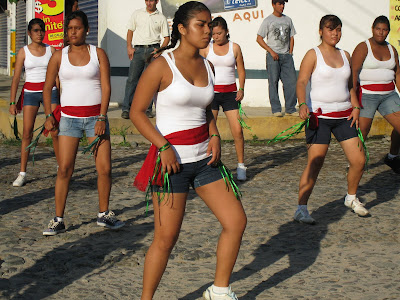





Ah, Maruata...
Paradise for many and hell for more precious travellers. If the hotel makes your vacation, then Maruata isn't for you. If outstanding wild beauty and living with the natives intrigues you then Maruata throws you in whole hog. Staying in simple palapas (thatched roughly hewn wooden structures) in the midst of Nahuatl (Aztec descendants) homesteads you are likely to meet Grandma having a bath at the pila (local wash basin) on your way to a reluctant rendition of a western bathroom.
Maruata is well outside capitalistic and mainstream Mexico. Her beaches are stunning, the rocks worthy of a good scramble, and boat trips take you up the remote coastline. With a tiny amount of luck you might see grey whales migrating, or sea turtles mating, or manta rays jumping. A ramble up Maruata's longest beach is sure to reveal countless turtle tracks leading to sandy nests jam-packed with eggs. A conservation program works hard to save these vulnerable critters. Even with the extra effort of humans they estimate that 1 in 100 turtles born makes it to reproductive age.
Check the refrigerator in town for a tasty all natural yoghurt drink from the interior of Michoacan state. Don't hesitate to buy a litre and if they have mango buy two.













 Heading straight away from Tecoman across the flat hot Colima coastal plain, lime trees give way to banana trees, the state of Colima gives way to Michoacan, and hot flats give way to growing hills. Our trip takes a turn into a much more remote stretch of coast.
Heading straight away from Tecoman across the flat hot Colima coastal plain, lime trees give way to banana trees, the state of Colima gives way to Michoacan, and hot flats give way to growing hills. Our trip takes a turn into a much more remote stretch of coast. 






























 border="0" />
border="0" />



